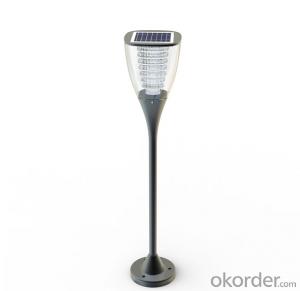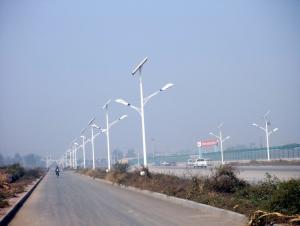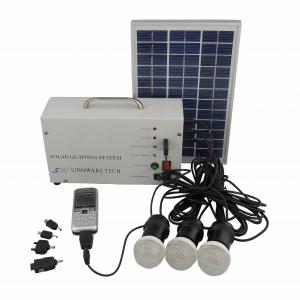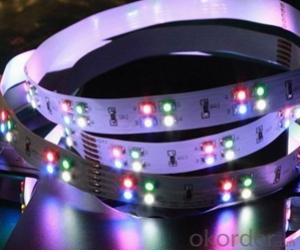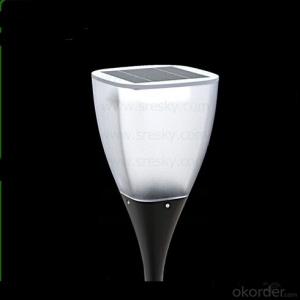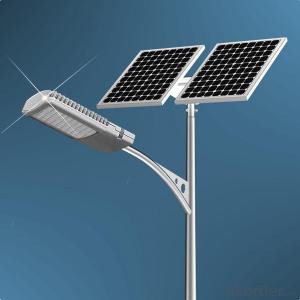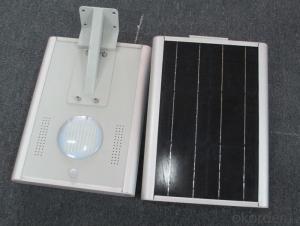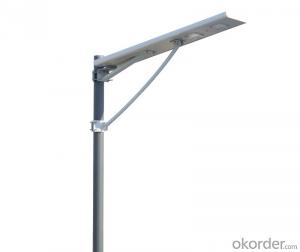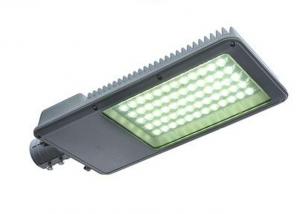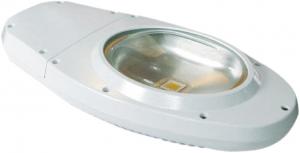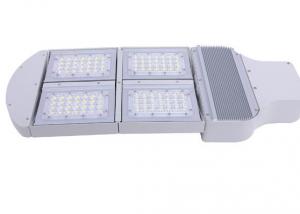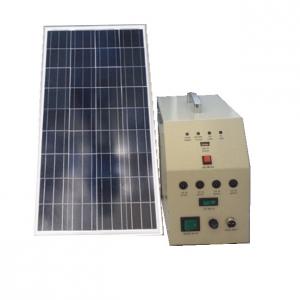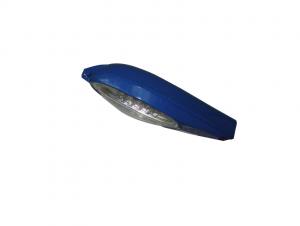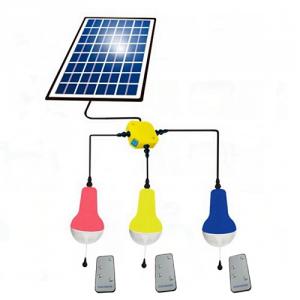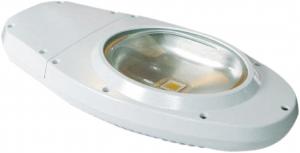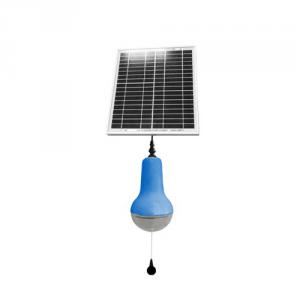Solar LED Solar Garden Light Stainless Aluminum body
- Loading Port:
- China main port
- Payment Terms:
- TT OR LC
- Min Order Qty:
- 100 set
- Supply Capability:
- 10000 set/month
OKorder Service Pledge
OKorder Financial Service
You Might Also Like
Features:
Elegant CUP design
Warm white lighting for decorating
Stainless Aluminum body
100% solar powered, wireless connection
Superbright LEDs,100Lumens
Over 2 nights long lighting time, Waterproof IP65
Specification | ||
Solar panel | 1.6W,17% efficiency | 10 years |
Li-ion battery | 3.7V 2000mAh | 500 cycles |
LED | 1W, 100lm, Warm White | 50,000Hrs |
Ray sensor | <10Lux | |
Lighting mode | Bright light 5 hours-Dim light 7 hours | Switch timer |
material | Aluminum + ABS | |
Solar charging time | 7~8 hours by bright sunlight | 1000W/m2 |
Lighting time | Around 3 nights | Full charged |
Efficiency | >85% | |
Product size | 264mm(H)*dia 160mm | Unit:mm |
Product Application Area:
Courtyard/Garden
Park
Roadway/pathway
Parking Lot
Private road
Sidewalk
Public square/ plaza
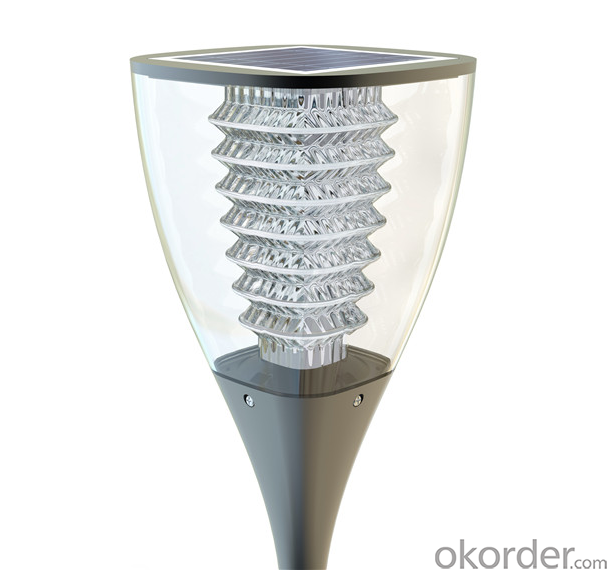
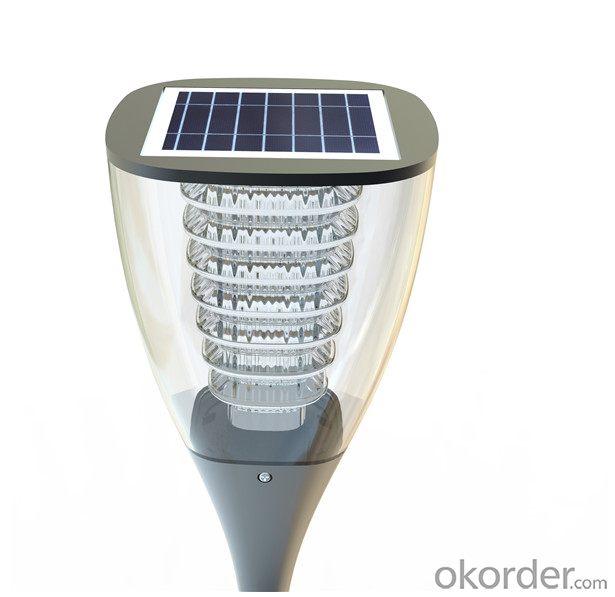
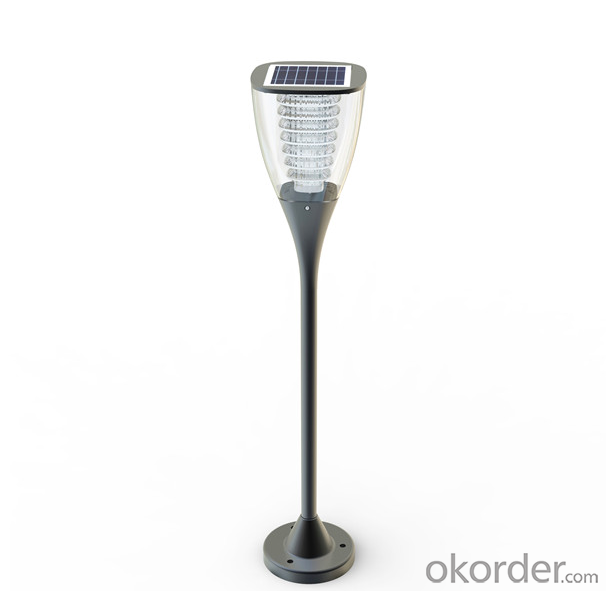


FAQ
1.How to install?
You can fix the product with the screw in the packing box and install the product on the area that needs illumination. Enough sunshine that can insolate the solar panel for charging has to be ensured. You have to pay attention that excellent effect of charging can be achieved when the solar panel has angle and no shelter and faces to the south area.
2.How to use and how to charge?
The product is off before delivery in order to avoid discharging during transportation. You can activate it by using the pin, take away the magnet, and face the solar panel to the sunlight or tearing off the film. This is depend on different item, the activate way may differ. Solar panel should be insolated with certain angle and charge in the daytime and bright automatically in the nighttime.
3.Dose the light illuminate in the daytime?
The light is optically controlled. It will not illuminate when there is enough light during the day. Once night falls, it will bright.
4.How is the effect of the PIR motion sensor?
The light will be in the energy saving mode when it is dark automatically, light will be off when it is dawn. With this characteristic, the light can be used as signal light, indicator light and continuous light.
PIR motion sensor light: Entering into the induction area when it is dark, the light will bright automatically and lasts for about 30 seconds, and then, it will turn to power saving mode.
- Q:Can solar lights be used for outdoor classrooms and educational spaces?
- Certainly, outdoor classrooms and educational spaces can effectively utilize solar lights. These lights are an ideal option for these areas due to their reliance on sunlight for power and their independence from electrical wiring or connection to the grid. Consequently, installation is a breeze and eliminates the need for ongoing electricity expenses. In many cases, outdoor classrooms and educational spaces have limited access to electrical outlets, particularly in remote or outdoor locations. Solar lights offer a sustainable and eco-friendly solution to illuminate these spaces, enabling extended usage and activities during the evening. Various designs and sizes of solar lights are available, including overhead lights, pathway lights, and even portable lights. This versatility allows educators to select the most appropriate lighting option based on the specific requirements of their outdoor classroom or educational space. Furthermore, solar lights can serve as an educational tool in themselves, aside from providing essential lighting. They can be employed to educate students about renewable energy and sustainability, emphasizing the significance of harnessing solar power for everyday needs. Through the use of solar lights, educators can demonstrate how clean energy sources can reduce carbon footprints and conserve resources. All things considered, solar lights are an outstanding choice for outdoor classrooms and educational spaces. They offer dependable and cost-effective lighting while promoting sustainability and environmental consciousness.
- Q:How do I troubleshoot solar lights that are not working?
- To troubleshoot solar lights that are not working, start by checking the battery. Ensure it is fully charged and properly connected. If the battery is fine, inspect the solar panel for any dirt or debris blocking sunlight. Clean it gently if needed. Additionally, confirm if the light's on/off switch is in the correct position. If none of these steps resolve the issue, consider replacing the battery or contacting the manufacturer for further assistance.
- Q:How do solar lights enhance home security?
- Solar lights enhance home security in several ways. Firstly, they can deter potential intruders by illuminating the surroundings of the house, making it less attractive for criminals to approach. Additionally, the presence of solar lights can increase the visibility around the property, making it easier for homeowners and neighbors to detect any suspicious activity. Since solar lights are powered by the sun, they do not rely on electricity, meaning they will continue to illuminate even during power outages, ensuring continuous security coverage. Overall, solar lights provide an affordable and effective way to enhance home security and create a safer environment.
- Q:How do you troubleshoot solar lights that are not working?
- When troubleshooting solar lights that are not working, there are a few steps you can take. Firstly, check whether the solar panels are receiving direct sunlight as shade can affect their ability to charge. Clean the solar panels to ensure they are free from dust or debris, as this can also hinder their performance. Next, inspect the batteries and make sure they are properly connected and not corroded. Replace the batteries if necessary. Additionally, check the wiring connections to ensure they are secure and undamaged. If all else fails, contact the manufacturer or consult a professional for further assistance.
- Q:Do solar lights have adjustable timers for automatic operation?
- Indeed, numerous solar lights come equipped with adjustable timers to facilitate automatic functioning. These timers grant users the ability to establish precise schedules for the lights to autonomously switch on and off. This proves particularly advantageous for outdoor lighting purposes, as it eradicates the necessity for manual operation while guaranteeing that the lights are solely active when required, thereby conserving energy and prolonging the lifespan of the solar batteries. Moreover, certain solar lights are further enhanced with motion sensors, capable of superseding the timer settings by automatically activating the lights upon detecting motion, and subsequently deactivating them after a designated time interval. This notable attribute offers users an added layer of security and convenience.
- Q:Can solar lights work during cloudy days?
- Yes, solar lights can still work during cloudy days, although their performance may be reduced. Solar lights rely on the sun's energy to charge their batteries, so when there is less sunlight available due to cloud cover, the charging process may take longer or be less efficient. As a result, the lights may not shine as brightly or for as long as they would on a sunny day. However, advancements in solar technology have made solar lights more efficient, allowing them to still provide some illumination even during cloudy days. Additionally, some solar lights have built-in sensors that can detect low light levels and automatically adjust their brightness accordingly.
- Q:What is good for solar lights?
- Look at the installation height, 6 meters can be the use of human resources, generally 3-4 adults can stand up. Solar street lamps are generally installed in rural areas, large span, not suitable for crane installation. We usually install about 25 sets a day.
- Q:How do I calculate the number of solar lights needed for an area?
- To determine the number of solar lights needed for an area, various factors must be taken into account. Firstly, the area itself should be measured to determine the total space that requires lighting. This could include gardens, pathways, or any other outdoor areas. Next, the desired level of brightness or lighting for the area should be decided. This will depend on the purpose of the lighting, such as decorative, safety, or functional purposes. The required lumens must then be calculated. Lumens measure the amount of visible light emitted by a source, and different spaces require different levels. For instance, pathways may need around 100-200 lumens per light, while gardens may require 300-500 lumens per light. The capacity or wattage of the solar panel should be considered. This will determine the amount of energy it can produce. It's important to ensure that the solar panel's capacity is sufficient to power the necessary number of lights. By multiplying the required lumens per light by the number of lights needed, the total lumens required for the area can be calculated. The battery capacity or storage necessary to power the lights during non-sunny hours should also be determined. This should take into account the average duration of darkness in the area and select a battery capacity that can sustain the lights for that period. To find suitable solar lights, it's important to assess their specifications and compare them to the desired lumens output, battery capacity, and solar panel capacity. To estimate the number of solar lights needed for the area, divide the total lumens required by the lumen output of the chosen solar light. Factors like shading, weather conditions, and potential obstacles that could block sunlight from reaching the solar panels should also be considered. Consulting with a professional or using online calculators can help ensure accurate calculations for the specific situation.
- Q:How do solar lights handle saltwater corrosion?
- Solar lights are generally designed to withstand saltwater corrosion to a certain extent. They are usually made with materials that are resistant to corrosion, such as stainless steel or high-quality aluminum. These materials have properties that make them less susceptible to the damaging effects of saltwater. Additionally, solar lights are often coated with protective layers or finishes that provide an extra barrier against corrosion. These coatings can help prevent the saltwater from coming into direct contact with the metal components of the light, reducing the risk of corrosion. However, it is important to note that while solar lights are designed to handle saltwater corrosion, they are not entirely immune to its effects. Over time, continuous exposure to saltwater can still cause some level of degradation or damage to the light's components. Therefore, regular maintenance and cleaning are crucial to ensure the longevity of solar lights in saltwater environments. Proper maintenance includes rinsing the lights with fresh water periodically to remove any salt residue, checking for any signs of corrosion or damage, and applying appropriate protective coatings or sealants if necessary. By following these maintenance practices, solar lights can effectively handle saltwater corrosion and maintain their functionality and durability over an extended period.
- Q:Can solar lights be used in areas without electricity?
- Yes, solar lights can be used in areas without electricity. Solar lights operate by harnessing energy from the sun through solar panels and storing it in batteries. This stored energy is then used to power the lights, making them a sustainable and practical lighting solution for areas without access to electricity grids.
1. Manufacturer Overview |
|
|---|---|
| Location | |
| Year Established | |
| Annual Output Value | |
| Main Markets | |
| Company Certifications | |
2. Manufacturer Certificates |
|
|---|---|
| a) Certification Name | |
| Range | |
| Reference | |
| Validity Period | |
3. Manufacturer Capability |
|
|---|---|
| a)Trade Capacity | |
| Nearest Port | |
| Export Percentage | |
| No.of Employees in Trade Department | |
| Language Spoken: | |
| b)Factory Information | |
| Factory Size: | |
| No. of Production Lines | |
| Contract Manufacturing | |
| Product Price Range | |
Send your message to us
Solar LED Solar Garden Light Stainless Aluminum body
- Loading Port:
- China main port
- Payment Terms:
- TT OR LC
- Min Order Qty:
- 100 set
- Supply Capability:
- 10000 set/month
OKorder Service Pledge
OKorder Financial Service
Similar products
New products
Hot products
Related keywords
